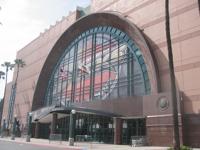The Southeast community is celebrating the start of a new light rail transit project that has been 20 years in the making.
On Wednesday, state and local officials gathered in the city of Artesia for the utility groundbreaking that will eventually lead to the construction of the Southeast Gateway Line.
Los Angeles County Supervisor Janice Hahn, also the current Metro Board Chair, remembered when her team gave a laminated map to U.S. Secretary of Transportation Pete Buttigieg to let him know about the importance of the project. The intention was to get federal funding.
“Because when you give a laminated map, it’s a project. I mean, if it’s laminated it is for real,” she said.
While the groundbreaking for moving the utilities may not seem like a big deal, it’s extremely important mainly because it is a long and complicated process.
“So this first phase will involve working with 34 utilities along the 15-mile corridor to do things like move power lines out of the way, relocate underground pipes…to build the tracks and stations without any issues,” said Hahn during the press conference that took place in what will be the last—or first—stop of the Southeast Gateway Line in Artesia.
She said it would be incredible to see the project completed that will serve 12 communities because it has been promised for decades. The supervisor has talked to her constituents from these areas, and they have shared their experiences of having to take two to three buses to do their usual commutes, such as going to school, work, grocery shopping, or a doctor’s appointment.
“So we are taking a big step today to change that,” she said.

Congressmember Robert Garcia said this is the most important transportation project in the region because it will serve a community that desperately needs rail access. However, he acknowledged that the project would not be built without significant federal support.
“Which is why so many of you were not just meeting with me but meeting with Secretary Buttigieg, the Department of Transportation, and all of the partners at the federal level to bring in the substantial dollars it takes to get this project done,” said Garcia.
Logistics of project
The Southeast Gateway Line will include nine stations with the southern terminus at the Pioneer Station in the city of Artesia. It will include stops in the cities of Bell, Bellflower, Cerritos, Cudahy, Downey, Florence-Firestone, Huntington Park, Los Angeles, Paramount, South Gate and Vernon, where it will connect to the Slauson A Line in Los Angeles.
The line will also include a new C Line station at the I-105 freeway. There will be five parking facilities, 30 at-grade crossings and 15 elevated crossings.
Additionally, a Maintenance and Storage Facility (MSF) will be in charge of supporting administration, operations, and maintenance for Metro’s light rail fleet, including inspections, repairs, and cleaning.
In April 2024, Metro’s project received the California Environmental Quality Act (CEQA) certification, approving 14.5 miles of the new light rail. In August, it earned a federal Record of Decision, enabling funding eligibility by the Federal Transit Administration. The entire project is expected to be completed in 2035.

Economic Impact
Elected officials said the project will have a positive economic impact in many ways during and after construction.
The construction and operation of the line will create 40,000 good-paying union jobs. Starting in the fall of 2025, students will be able to join a new apprenticeship program at Cerritos College in partnership with Metro. The program will teach the students how to work on rail lines throughout Metro’s growing network.
“That program will set them up for sustainable, good-paying union careers long after this line is built,” said Hahn.
Once the project is built, the stops will include better pedestrian access, connections to bike infrastructure, and sustainability, among other amenities. At every stop, there will be a station with the potential for economic development.
“So we are building not just a rail system, we are rebuilding our southeast cities,” said Garcia.
During the press conference, elected officials representing each of the cities and communities that will benefit from the Southeast Gateway Line came together to sign a Master Contract Agreement to support the project.
California State Senator Bob Archuleta recognized everyone’s effort and announced that the California State Transportation Authority (CalSTA) had awarded the project $231 million for this cycle.













(0) comments
Welcome to the discussion.
Log In
Keep it Clean. Please avoid obscene, vulgar, lewd, racist or sexually-oriented language.
PLEASE TURN OFF YOUR CAPS LOCK.
Don't Threaten. Threats of harming another person will not be tolerated.
Be Truthful. Don't knowingly lie about anyone or anything.
Be Nice. No racism, sexism or any sort of -ism that is degrading to another person.
Be Proactive. Use the 'Report' link on each comment to let us know of abusive posts.
Share with Us. We'd love to hear eyewitness accounts, the history behind an article.